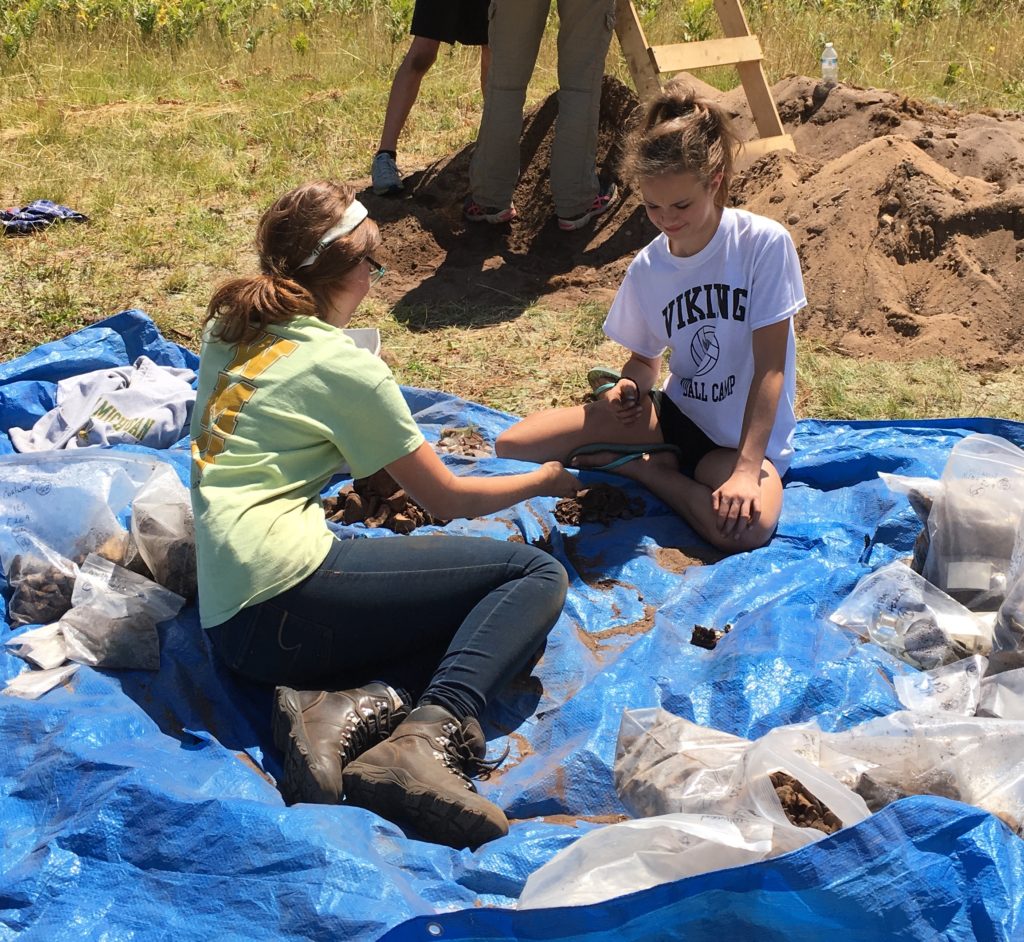
During the summer of 2014 I was a student in an archaeological field school hosted by Western Michigan University in the Hiawatha National Forest, where we excavated the family housing portion of a lumber camp which operated from 1900-1912. The camp encouraged workers to bring their families, who would provide free domestic labor. So instead of hiring someone to cook and clean, the wives and children of the lumberjacks cooked, cleaned, and tended to the chores so that the lumberjacks could spend their days in the forest. Due to their economically precarious positions as seasonal laborers, earning little pay, I went into the field season assuming that we would only find artifacts related to basic necessities. However, to my surprise we found artifacts related to children’s toys and their education. As the only student under 21 and the only girl in the field school I felt as though I was playing into a stereotype when I was drawn to the children’s toys that we were excavating.
While other students were most excited about coins, glass bottle sherds, and ammunition, I couldn’t help but be fascinated by the porcelain doll pieces, marbles, and educational materials found at the site. After all, it went against the preconceived notions that I had had about the lives of those who had once lived there. I had envisioned a life where girls woke early to help their mothers prepare breakfast for their fathers and older lumberjack brothers, where girls spent their days doing chores to keep the house running, and where girls spent their evenings caring for younger siblings and thus had no need for dolls and no time to learn to read. However, rich oral histories, archival documents, and an extensive artifact collection disprove this notion. While girls did rise early to help prepare meals and complete morning chores, such as bringing in wood for the stove, those who were old enough went off to school. Parents at the lumber camp placed a great deal of importance on education, which is shown through the census documents which mark all children of school age as literate, and the shards of an alphabet plate excavated with garbage from a worker’s home. The plate would have cost 55 cents from the Sears and Roebuck catalogue, a hefty price for a lumberjack, yet until it broke, the plate would have helped to teach his children the alphabet and would have prepared them for school. After school, girls had to complete homework and chores, but afterwards they had time to play. Porcelain doll parts found in the context of worker’s homes suggests that lumberjacks bought dolls for their daughters. The ability for their daughters to play with dolls allowed for fun as well as development through play. Despite what I had originally thought, girls growing up at the lumber camp had a childhood not entirely dissimilar from my own. Through chores, school, and play girls living at the lumber camp impacted the world around them. How did you imagine girlhood at an early 20th century lumber camp?
I’d like to thank Dr. LouAnn Wurst and National Forest archaeologist Eric Drake for organizing the 2014 field school.
-Maria Smith
Junior Girl
Girl Museum Inc.
